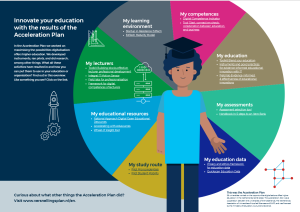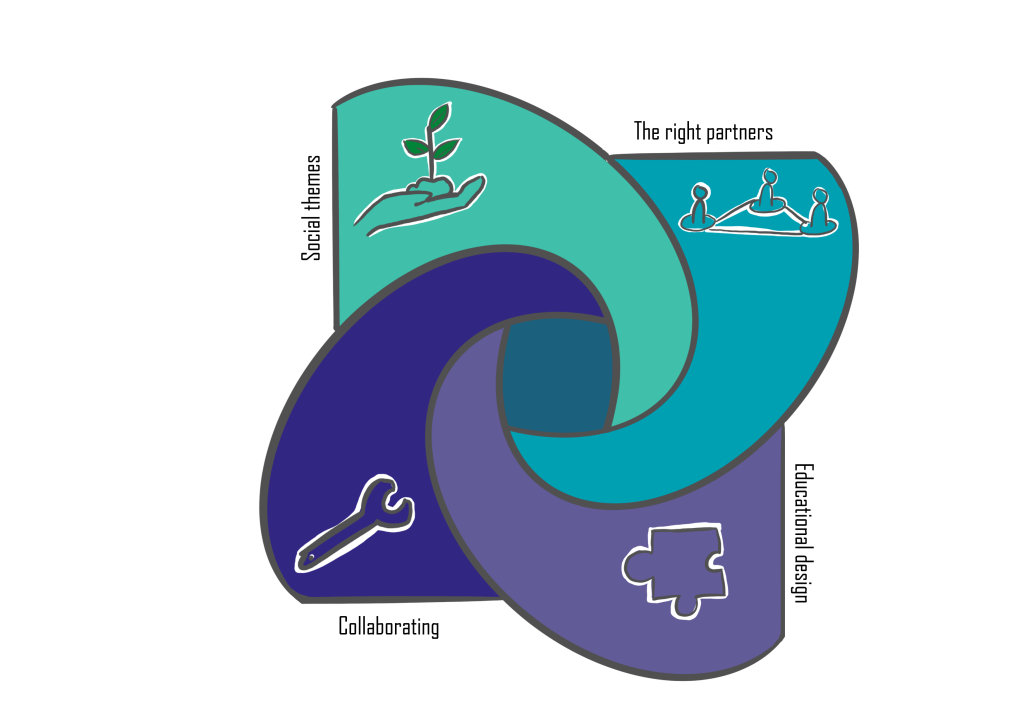
Infographic results Acceleration Plan
In the Acceleration Plan we worked on maximising the possibilities digitalisation offers higher education. We developed instruments, ran pilots, and did research, among other things.
Acceleration plan | Start, Connect and Check tool: collaboration between education and business

Starting up a hybrid learning environment: how do you do it and where do you start?
The Strengthening digital human capital zone conducted research into the cooperation between educational institutions and the business world in a hybrid learning environment. An environment in which students, teachers and the professional field work together on digitisation issues. What are the preconditions for achieving good cooperation between education and business? Various topics such as educational design, organisation, financing and the different roles within a hybrid learning environment were discussed. But also recommendations, tips, and practical examples for sustainable hybrid learning environments. This resulted in a practical and rich advisory tool: Start Connect and Check.
Read on about why a hybrid learning environment is important, explain how the tool works, and get started immediately.
Click on the link below to download the file
> Recommendations and explanations Learning communities
Collaboration between work field, education and research on digitisation
Why a hybrid learning environment?
Hybrid learning environments are promising learning environments for students to acquire the skills needed in the workplace. These learning environments have elements including learning across subject boundaries and knowledge co-creation to solve real-life problems.
How does it work?
Click on the different tabs and select the recommendations that apply to your hybrid learning environment. When you have selected all applicable recommendations, click [View all selected results] to see an explanation and an example. You can also add your own comments that relate to your specific situation. You can then save the list as a PDF by clicking on […]. The recommendations have been obtained from case studies that have succeeded in improving the connection to the labour market.
The experiences have come from, among others
Share this page

In the Acceleration Plan we worked on maximising the possibilities digitalisation offers higher education. We developed instruments, ran pilots, and did research, among other things.

Getting started with the (continued) development of a powerful learning community How can collaboration between companies and educational institutions be shaped in a learning community?

Integrate digital competences into profiles for (higher) education and work Does a nurse know how to handle his patient’s electronic record? And can a farmer

Blended learning. A concept that is high on the agenda in education land. Are you working on blended learning within your institution? Then you know
Deze website maakt gebruik van cookies. Lees hier over onze Coookies